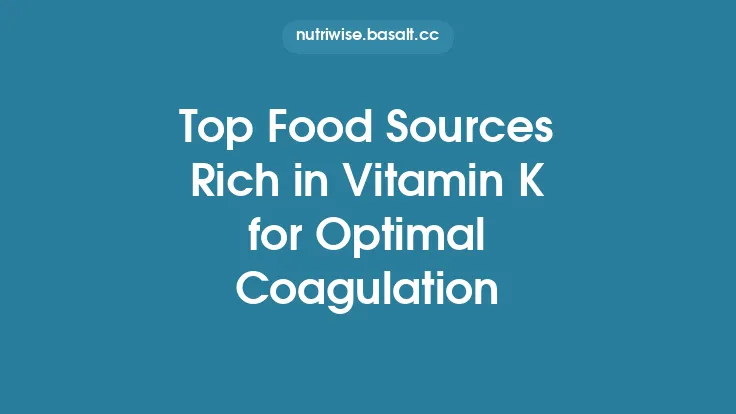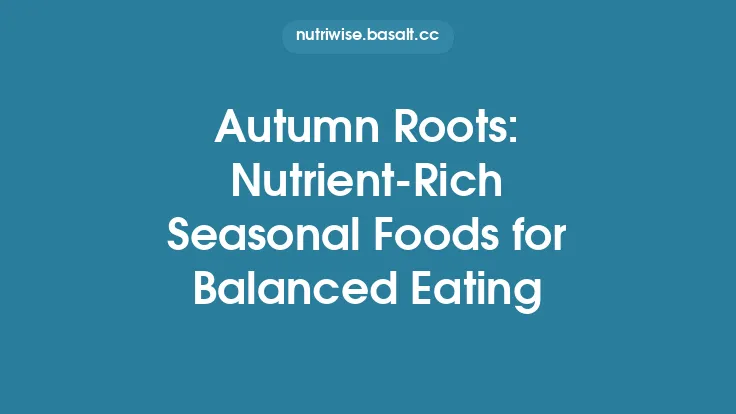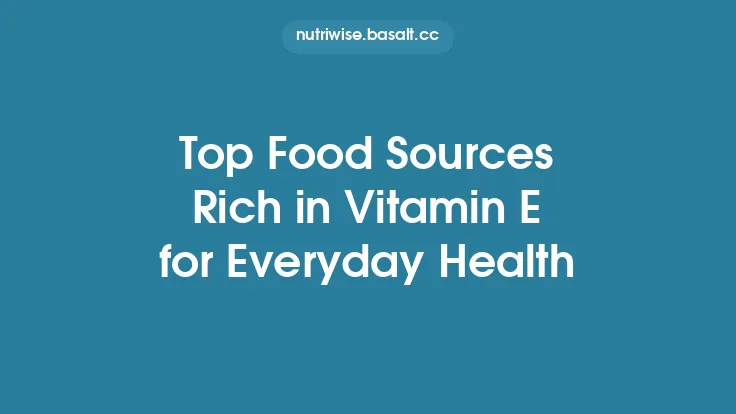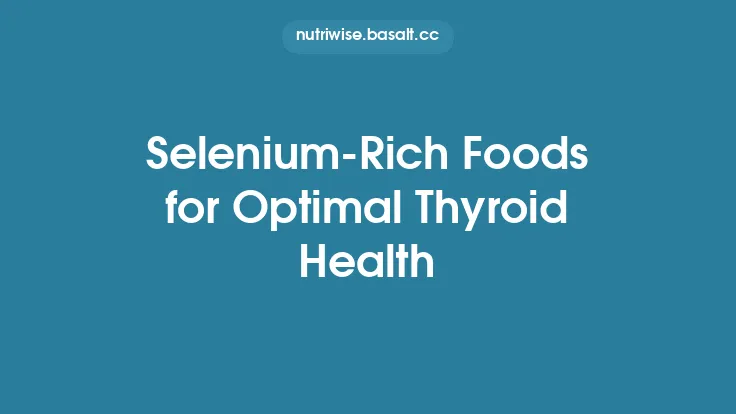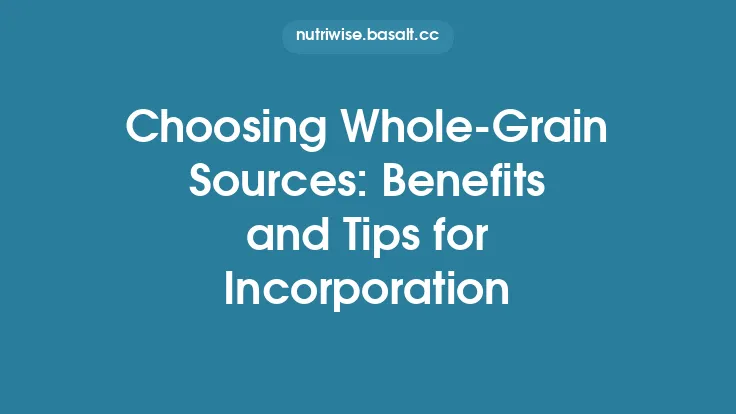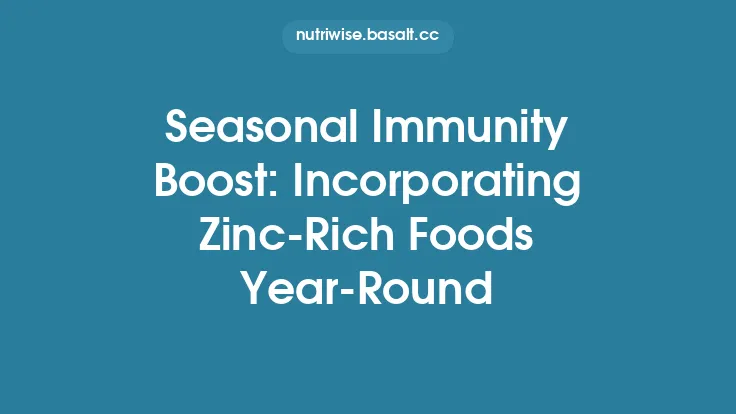Vitamin C is a water‑soluble micronutrient that plants synthesize in large quantities as part of their normal metabolism. Because humans cannot produce it, we must obtain it from the foods we eat. A diet rich in natural sources of vitamin C not only supplies this essential nutrient but also contributes a broad spectrum of complementary antioxidants that work together to protect cells from oxidative change. Below is a comprehensive guide to the foods that deliver the highest vitamin C content, the factors that influence their potency, and practical ways to keep that potency intact from farm to fork.
Key Characteristics of Vitamin C‑Rich Foods
| Feature | Why It Matters for Vitamin C Content |
|---|---|
| Plant Part | Fruits and leafy vegetables typically contain the highest concentrations because vitamin C is involved in photosynthesis and stress responses. |
| Pigmentation | Brightly colored produce (red, orange, yellow, deep green) often signals high levels of both vitamin C and other phytochemicals such as carotenoids and flavonoids. |
| Water Content | Vitamin C is water‑soluble; foods with high moisture (e.g., bell peppers, strawberries) tend to retain more ascorbic acid. |
| Acidity (pH) | Slightly acidic environments (pH 3–5) stabilize ascorbic acid, reducing degradation during storage. |
| Cellular Structure | Tissues with thin cell walls (e.g., berries) allow easier release of vitamin C during chewing, enhancing bioavailability. |
Understanding these traits helps you select produce that naturally packs a larger antioxidant payload.
Top Natural Sources of Vitamin C
The following table lists the most concentrated sources, expressed per 100 g of edible portion. Values are averages from multiple food composition databases and reflect fresh, raw conditions.
| Food (Raw) | Vitamin C (mg) | Notable Co‑Antioxidants |
|---|---|---|
| Kakadu plum (Terminalia ferdinandiana) | 5,300 | Polyphenols, ellagic acid |
| Camu camu (Myrciaria dubia) fruit | 2,800 | Anthocyanins |
| Acerola cherry (Malpighia emarginata) | 1,700 | Carotenoids, flavonols |
| Rose hips (Rosa canina) | 1,200 | Vitamin E, beta‑carotene |
| Red bell pepper (Capsicum annuum) | 190 | Capsanthin, lutein |
| Green bell pepper | 120 | Chlorophyll, quercetin |
| Kiwi (Actinidia deliciosa) | 93 | Vitamin E, polyphenols |
| Strawberries | 59 | Anthocyanins, ellagic acid |
| Oranges (Citrus sinensis) | 53 | Flavonoids (hesperidin) |
| Pineapple (Ananas comosus) | 48 | Bromelain, beta‑carotene |
| Broccoli (florets) | 89 | Sulforaphane, vitamin K |
| Brussels sprouts | 85 | Kaempferol, glucosinolates |
| Kale (curly) | 120 | Lutein, zeaxanthin |
| Spinach (raw) | 28 | Beta‑carotene, lutein |
| Tomatoes (red) | 14 | Lycopene, vitamin K |
*Note:* The “Notable Co‑Antioxidants” column highlights other compounds that often accompany vitamin C in the same food matrix, providing a broader antioxidant profile without delving into mechanistic interactions.
Seasonal and Regional Variations
- Climate Influence – Sunlight intensity, temperature fluctuations, and rainfall affect the biosynthesis of ascorbic acid. For example, citrus grown in subtropical regions during the peak of the dry season often shows a 10–15 % increase in vitamin C compared with fruit harvested during the rainy season.
- Harvest Timing – Fruits picked at full maturity (but before overripening) contain the highest vitamin C levels. Over‑ripe berries may lose up to 30 % of their ascorbic acid due to prolonged exposure to ambient oxygen.
- Soil Nutrition – Adequate potassium and nitrogen support the enzymatic pathways that generate vitamin C. Soils deficient in these minerals can lead to modest reductions (5–8 %) in the vitamin content of leafy greens.
- Geographic Origin – Certain exotic sources, such as Kakadu plum and camu camu, are native to specific ecosystems (Australian savannas and Amazonian floodplains, respectively). Importing these foods often involves post‑harvest handling that can diminish vitamin C unless rapid cooling and vacuum packaging are employed.
When possible, choose locally grown, in‑season produce to capture the natural peak of vitamin C and related antioxidants.
Impact of Harvesting, Storage, and Preparation on Vitamin C Content
Harvesting Practices
- Gentle Handling – Mechanical bruising ruptures cell membranes, exposing ascorbic acid to oxygen and accelerating oxidation. Hand‑picked or carefully sorted produce retains more vitamin C.
- Rapid Cooling – Immediate cooling (ideally to 0–4 °C) after harvest slows enzymatic degradation. Commercial cold‑chain logistics aim for a “time‑temperature” window of less than 24 hours from field to retailer.
Storage Conditions
- Temperature – Vitamin C degrades roughly 0.5 % per day at 20 °C, but the rate drops to <0.1 % per day at 0 °C. Refrigeration is therefore essential for extending shelf life.
- Atmosphere – Modified‑atmosphere packaging (low O₂, elevated CO₂) can reduce oxidative loss by up to 40 % for cut fruits like strawberries.
- Light Exposure – UV light catalyzes ascorbic acid oxidation; opaque containers or dark storage areas help preserve content.
Preparation Techniques
- Washing – Rinsing under cool running water removes surface contaminants without significant vitamin loss. Soaking for extended periods can leach water‑soluble vitamin C; limit soak time to under 5 minutes.
- Peeling – The skin of many fruits (e.g., kiwi, bell peppers) contains a substantial portion of the vitamin C. Peeling reduces overall intake, so consume edible skins when texture and taste allow.
- Cutting – Slicing increases surface area, exposing more ascorbic acid to oxygen. To minimize loss, cut produce immediately before consumption or store cut pieces in airtight containers with a splash of citrus juice (which lowers pH and slows oxidation).
Cooking Methods and Vitamin C Retention
Because vitamin C is heat‑sensitive and water‑soluble, cooking can lead to measurable losses. However, the magnitude of loss varies widely with technique.
| Cooking Method | Approximate Vitamin C Retention* | Practical Tips |
|---|---|---|
| Steaming (5–10 min) | 80–90 % | Use minimal water; cover pot tightly to trap steam. |
| Microwaving (short bursts) | 85–95 % | Place food in a microwave‑safe dish with a small amount of liquid; avoid over‑cooking. |
| Stir‑frying (high heat, short time) | 70–80 % | Keep temperature high but cooking time under 3 min; add a splash of citrus juice at the end. |
| Boiling (full immersion) | 30–50 % | Vitamin C leaches into cooking water; reuse the water in soups or sauces to recover nutrients. |
| Roasting/Baking (moderate heat, 20–30 min) | 60–75 % | Coat vegetables lightly with oil to reduce direct water loss; cover with foil for part of the cooking time. |
| Blanching (brief hot water dip) | 70–85 % | Use a large volume of water and cool rapidly in ice water to stop further loss. |
\*Values are averages from controlled studies; actual retention depends on size of pieces, initial vitamin C concentration, and exact temperature/time parameters.
Key Takeaway: Short, low‑water, high‑heat methods (steaming, microwaving, quick stir‑frying) preserve the greatest proportion of vitamin C while still delivering palatable textures.
Combining Foods for Enhanced Antioxidant Profiles
While vitamin C itself is a potent antioxidant, the foods that contain it also bring a suite of other phytochemicals. Pairing certain items can create a more robust antioxidant matrix:
- Citrus + Leafy Greens – A salad of orange segments, spinach, and toasted almonds supplies vitamin C alongside vitamin E and flavonoids, which together improve overall oxidative stability in the diet.
- Bell Peppers + Tomatoes – The acidic environment of bell peppers helps maintain vitamin C in cooked tomato sauces, while lycopene from tomatoes adds a complementary antioxidant.
- Berries + Nuts – Berries provide high vitamin C and anthocyanins; nuts contribute vitamin E and selenium, offering a balanced antioxidant blend.
- Kiwi + Yogurt – The mild acidity of kiwi can enhance the bioavailability of certain minerals in dairy, while the probiotic matrix may protect vitamin C from rapid degradation during digestion.
These pairings are suggested for culinary variety and to naturally broaden the antioxidant intake without focusing on specific health outcomes.
Practical Tips for Incorporating Vitamin C‑Rich Foods into Daily Meals
- Morning Boost – Add a handful of fresh berries or a sliced kiwi to oatmeal, yogurt, or a smoothie.
- Snack Smart – Keep pre‑washed bell pepper strips, snap peas, or a small container of pineapple chunks in the refrigerator for quick, nutrient‑dense bites.
- Salad Strategies – Mix raw greens (kale, spinach) with orange or grapefruit segments, and drizzle with a citrus‑based vinaigrette to reinforce vitamin C content.
- Side Dish Upgrade – Steam broccoli or Brussels sprouts for 5 minutes, then finish with a squeeze of lemon juice just before serving.
- Sauce Savvy – When preparing tomato‑based sauces, stir in a tablespoon of freshly squeezed orange or lemon juice at the end of cooking to replenish any vitamin C lost to heat.
- Batch Prep – Freeze portions of vitamin C‑dense fruits (e.g., strawberries, mango) on a tray before transferring to bags; frozen fruit retains most of its vitamin C and can be used in smoothies year‑round.
- Seasonal Rotation – Plan weekly menus around the season’s peak produce: summer (berries, stone fruits), autumn (citrus, kiwi), winter (cabbage, kale), spring (asparagus, peas).
By embedding these habits into routine meal planning, you can maintain a consistently high intake of natural vitamin C and its accompanying antioxidants.
Considerations for Special Dietary Patterns
- Plant‑Based/Vegan Diets – Emphasize a variety of fruits, vegetables, and legumes. Legumes such as lentils contain modest vitamin C; pairing them with a citrus‑based dressing can boost overall antioxidant density.
- Low‑FODMAP Regimens – Certain high‑vitamin C foods (e.g., apples, pears) may be limited. Opt for low‑FODMAP alternatives like strawberries, kiwi, and bell peppers, which still deliver ample ascorbic acid.
- Gluten‑Free Plans – Naturally gluten‑free produce (all fresh fruits and vegetables) aligns well with vitamin C‑rich choices; just ensure any processed sauces or dressings are free from hidden gluten sources.
- Elderly Populations – Age‑related reductions in gastric acidity can affect vitamin C absorption. Offering softer, well‑cooked but lightly steamed vegetables (e.g., carrots with a citrus glaze) can improve palatability while preserving most of the nutrient.
Tailoring food selections to these patterns ensures that the antioxidant benefits of vitamin C remain accessible across diverse eating styles.
Building a Consistently High Antioxidant Intake
A diet that regularly features a spectrum of vitamin C‑rich foods naturally supplies a broad antioxidant capacity. The strategy is simple:
- Diversity – Rotate between fruits, leafy greens, cruciferous vegetables, and colorful peppers to capture varied co‑antioxidants.
- Freshness – Prioritize fresh, minimally processed produce and store it under optimal conditions (cool, dark, low‑oxygen).
- Gentle Cooking – Use steaming, microwaving, or quick stir‑frying to retain the majority of vitamin C.
- Smart Pairings – Combine foods that complement each other's antioxidant profiles for a more balanced intake.
- Seasonal Awareness – Align your grocery list with what’s in season locally to benefit from peak vitamin C concentrations.
By integrating these principles into everyday meal planning, you create a resilient dietary foundation that supplies vitamin C and a host of natural antioxidants, supporting cellular health through consistent, natural nutrition.
